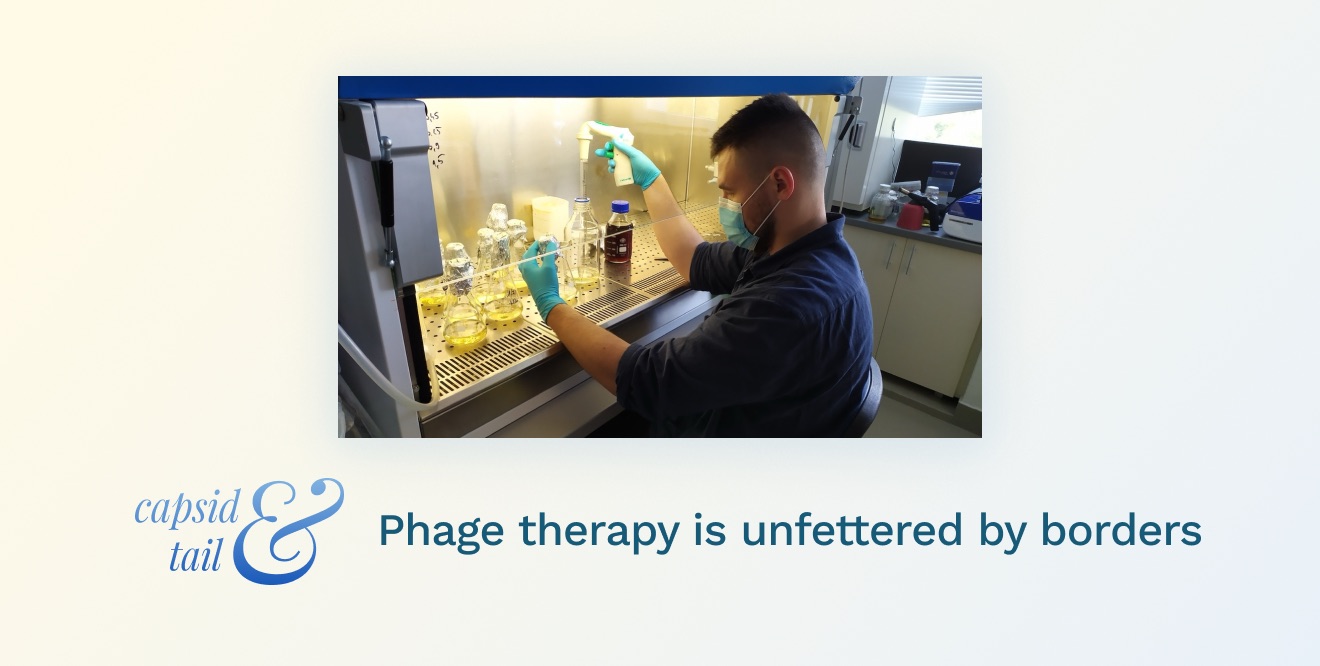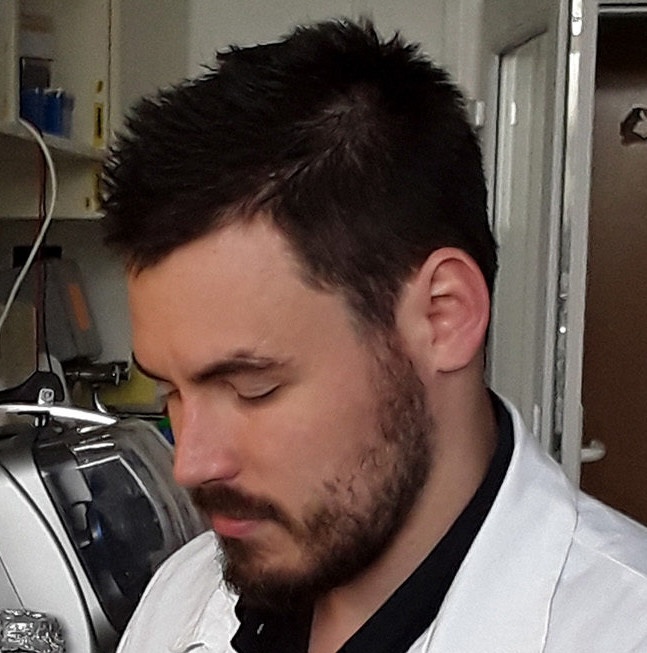Most researchers can probably relate to the desire to witness the practical manifestation of their work. Phage scientists are no exception, even more so given that phage therapy is already saving countless lives by eradicating antibiotic resistant infections. Yet unrefined, with many flaws to resolve - narrow host specificity, extensive but uncharted phage-human interplays and so on - phages made a theatrical return as highly potent therapeutics.
Current realities make phage therapy hard
One might assume such circumstances make phage therapy a welcome asset in the eyes of authorities. Perplexingly, one of the greatest hindrances before the large-scale clinical application of phages are the regulatories themselves. Healthcare decision makers are stubbornly skeptical about phage therapy, concerned about (unevidenced) severe detrimental effects and other supposed safety issues, despite the lack of alternative measures against the worsening threat of antibiotic resistant pathogens. Further, they fail or are unwilling to recognize phages for what they are - not medicinal drugs in the traditional sense, but biological entities with therapeutic potential. As such, phage therapeutics require a distinct regulatory framework for proper clinical employment.
Although the status quo has seemingly started to change for the better to some extent in the Western World, phage therapy related case studies are still few and far between. It is mainly applied in so-called ‘compassionate usage’ situations, wherein patients are typically already in serious trouble and time is running short, akin to throwing a strand of straw to someone drowning at the bottom of a waterfall. Obviously, these circumstances are far from ideal to properly assess and optimize phage therapeutic efficacy.
Here in Hungary, the regulations are even more strict. Clinicians and lawmakers have little to no knowledge about phages, which makes them highly suspicious of their therapeutic applications and doubtful of their usefulness. Worse, currently applied regulatory frameworks (or lack thereof) make Hungarian researchers and pioneering clinicians unable to find a legal way through the bureaucratic maze to apply phages.
Seeking an opportunity to help patients
Nonetheless, with the several miraculous phage therapies (such as the famous Patterson case) and both the scientific and non-scientific literature out there it is hard not to get inspired by the immense clinical potential the phages represent. Earlier during my PhD, after self-learning the ropes of basic phage hunting techniques and experiencing the effectiveness of phages in the laboratory first-hand, I was itching for an opportunity to send some of my phages into the molecular fray to save patients in desperate need. Sadly, I had (and still have) no way to do so in Hungary.
Responding to ‘Phage Alerts’
Luckily the opportunity to pursue my newfound hobby presented itself when I happened upon the Phage Alert initiative a few years back. What I had in mind was not overly sophisticated: I simply volunteer to every phage alert whenever I have the chance and the capacity, seeing no harm in trying to contribute.
Most recently this culminated in three cases: i) Pseudomonas aeruginosa infection in Portugal, ii) Klebsiella pneumoniae infection in Scotland and iii) Klebsiella aerogenes infection in Australia.
I cherished that I was somewhat pressured to further my knowledge about phage hunts. I didn’t want to provide ‘faulty’ (e.g. slowly propagating) or straight-up harmful (e.g. virulence boosting temperate) phages to the clinicians after all.
Receiving pathogens and trying to find phage matches
Upon receiving the target pathogens, the obvious first step was to try and match phages from our collection against the bacterial strains or isolate new ones from our wastewater samples. Unsurprisingly, one typically has to resort to the latter, due to the narrow host specificity of the phages, and it wasn’t different for me either.
I was usually lucky enough to observe plaques generated by phages enriched from the wastewater in almost each case. One Klebsiella strain was an exception as it just wouldn’t cooperate, meaning it refused to yield plaques. To circumvent this problem this strain was grown together with phages that enriched on the other, possibly closely related Klebsiella strains causing the infection, assuming that the successful propagation of these phages may have given rise to mutants active on the Klebsiella strain in question.
Indeed, this led to the isolation of an effective phage later dubbed ‘Scrapmetal’, reflecting on it being a recycled entity. Interestingly, Scrapmetal turned out to be active against both Klebsiella pneumoniae and aerogenes strains, a rare feat among phages.
Making sure phages are isolated and sequenced
To ensure that the phage stocks I wanted to investigate are not mixtures of multiple phages, I repeated the whole pick-the-plaques, propagate, do-a-plaque-assay cycle 2-3 times, then sent a number of them to sequencing. Due to the urgency of the cases (and in exchange for a few batches of homebrew beers) our inhouse sequencing team kindly let my samples cut the line every time, so I got my hands on the sequencing data pretty quickly. Assembly of the contigs was not an issue, fortunately yet again, as some phage genomes can be finicky to put together, forcing phage hunters to find time-consuming alternative sequencing solutions.
Thanks to the fervent activity of phage bioinformaticians, there are many ready-to-use softwares available to carry out quick and reliable analyzes to characterize the genomic features of the phage. Genome mapping, predictions for lifestyle, host range, depolymerase-, tRNA-, domain-, virulence- and resistance gene content, assessment of evolutionary relationships and so on can be routinely run in under a few minutes. All of these can give a good grasp about the therapeutic applicability of the phage, but naturally, experimental elucidation of the phages is a must-have.
Looking at phage efficacy in the lab
Bacterial killing efficacy can be quickly obtained by killing curve measurements. This simply means growing the bacteria in the presence of phages and measuring the optical density at certain time points with multiple different phage:bacteria ratios. If a phage can exert its inhibitory activity even at lower titers it is the indicator of a good candidate. It is also at this step when one starts to put together the phage cocktail(s), that is, the combinations of phages at hand that show the best synergism with each other. That said, it still might be wise to shove as many (individually also effective) phages as possible into the cocktail, provided they don’t antagonize each other’s activity, to give the targeted pathogen a really hard time when it tries to develop phage resistance. Lastly, it is likewise crucial to assess phage-antibiotic synergism in a similar manner, as phages and antibiotics usually greatly augment each other’s potency.
Finally, phages are ready to be shipped
Once all of the above is done, it is my experience that the phages are ready to be shipped. In extreme urgency, the isolated phages can be sent out even before the sequencing step and if nothing goes awry, the characterization can be completed by the time the shipment arrives (as it happened in one of the cases). It goes without saying that phages can be further characterized, if time permits: burst sizes, latency periods, adsorption assays, phage ‘training’, thermo- and pH stability, microscopic imaging, further genomic investigations etc. are all important angles from which the phages can be studied. However, phage hunts are usually rushed due to the urgent nature of the cases, enabling only the core experiments to be completed.
Sending phages away for purification prior to clinical use
Of course, the work is still not done yet: the phage preparations have to be manufactured in a form that can be administered to the patient. This includes the time- and labor demanding high-yield production, which is not as trivial as it might sound, as upscaling can be a challenging task. Purification of the phage preparations to remove endotoxins and other undesired bacterial debris is also a crucial necessity. While these can be done routinely the process currently requires accredited lab, imposing additional regulatory burden.
As we don’t have such accredited laboratories in Hungary, I was not involved in these steps, nor am I a clinician, so the details of the therapies themselves and the ultimate outcomes are not my place to tell. Most of them are positive, thanks to the expertise of the clinicians and the high efficiency of phages.
Many obstacles, but only a few weeks of work
It should be said that while all of the above might seem like exhausting and daunting endeavors, it is worth emphasizing that it requires only a few weeks to craft this life-saving remedy from wastewater. Compared to other clinical developmental processes, this is an astoundingly short timeframe.
Sure, there might be bumpers along the way and sometimes one has to get creative. For example, I once failed to isolate phage against Staphylococcus epidermidis from wastewater so I needed an alternative source. Turns out the nail clippings of my friends and colleagues are a proper source of Staphylococcus phages. Considering that Staphylococcus strains are frequent inhabitants of the human skin it is not hard to figure out why.
Obstacles of the sort can be readily overcome, as evidenced by the innumerable phages isolated against a wide range of pathogenic species. Still, there are many uncharted aspects of phage therapy needed to be investigated. Most likely therapeutic phages will need the aid of antibiotics and genome engineering for their therapeutic potential to be fully realized.
Phage therapy: underutilized but invaluable
Nonetheless, even in its current form, phage therapy could do tremendously more yet it is gravely under-utilized, mainly due to the lack of manpower, appropriate regulatory frameworks and of course, investment. In the face of the rapidly spreading antibiotic resistance, higher governmental awareness is much desired to support such an invaluable therapeutic tool.








